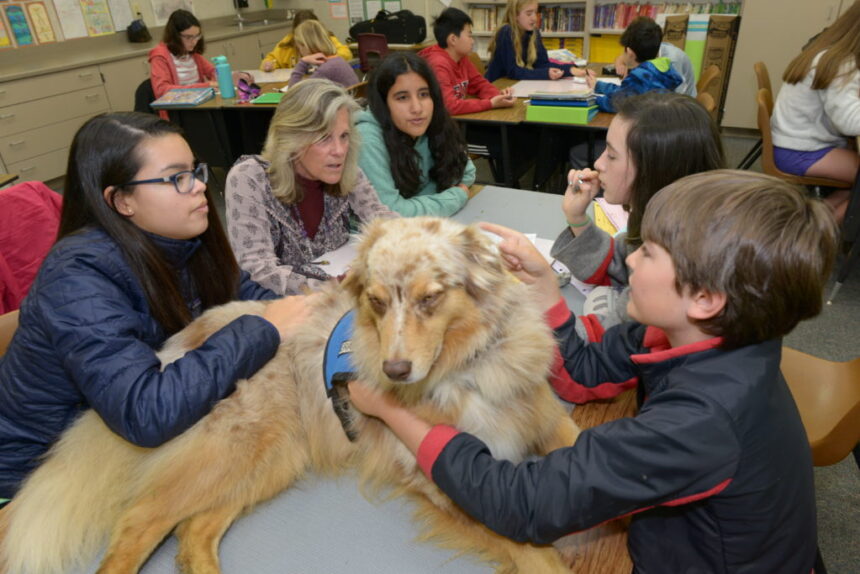Many schools have dogs, rabbits, and hamsters as classroom pets, which teach students empathy, responsibility, and how to be wildlife stewards.
Teachers and administrators have brought dogs, rabbits, frogs, hamsters, and the occasional chinchilla to class in schools nationwide to assist children and teach them empathy, responsibility, and how to be good stewards of wildlife.
According to experts, having animals in the classroom can help students feel more at ease.
Dogs as a source of therapy
Ann Ott, a social studies teacher with Osage Community School District, was assaulted sexually as a child and turned to her family dog, Tippy, as a source of comfort. Ott worked hard to overcome the abuse, but she never forgot Tippy, her dog. Unfortunately for Ott, her life took an unexpected and sad turn in 2018 when she lost her father, father-in-law, and her favorite dog, Tipper, who was named in honor of Tippy.
Her pain influenced her decision to train her family’s outdoor hunting dog, Millie, to be a therapy dog, which she takes to school. Ott stated, “One of the things that got me through the abuse was our dog. And I love that dog so much, and I wouldn’t have given a dog in school.”
Ott witnessed this when a middle school student stopped by her classroom to pet Millie. The student admitted that she only came to school that day to see the dog. Ott tearfully replied to the kid, “I’m so glad you are here; she wanted to see you, too.”
She added that, “That validated everything.” “I know having Millie has helped at least one student on one day. It has been one of the rewarding things I’ve done in my nearly 31 years in education.”
Van Meter Community School District’s therapy, Digger, is a real Cinderella story. According to the dog’s owner, Danette Cox, a first-grade teacher at Van Meter Elementary School, the dog flunked out of service dog training as a young dog. The dog, Digger, was trained as a therapy dog by Cox’s daughter, who saw the potential in him.
The dog became an employee of the Van Meter Community School District and received a Van Meter employee badge.
In the past seven years, Digger has become a companion for nervous newcomers, a confronting presence for students, and a gatherer of lost pencils off the classroom floor. Cox stated, “Everyone knows him, and he makes his way around the school.”
According to Cox, “They’re accepted no matter what. It doesn’t matter you look or what your disability is.”
Rocky impacts responsibility and empathy
Although Lincoln Elementary teacher Connie Ryan’s classroom is not exactly a zoo, it does have a zookeeper who looks after Rocky, a bearded dragon.
Rocky has been going to Osage with Ryan for the past six years. Ryan, a fourth-grade science and language arts teacher, selects a student every week from homeroom to take care of Rocky, the lizard, and act as a zoo keeper. This means they take care of his feeding, routine terrarium maintenance, and occasional baths.
According to Ryan, “students often request to stay in at a recess with a friend to finish his care task.” She added that Rocky is a “homebody” who monitors activity hallway traffic from his enclosure. He enjoys walking around the classroom and sitting on the student’s shoulders like a parrot.
Occasionally, students stop by Ryan’s classroom and are allowed to hold Rocky and feed him with mealworms.
Ryan states, “Rocky’s laidback has a calming effect for these individuals, as they have been taught that lots of noise, sudden movements, and rough handling are not what he refers.” “We have discussed the importance of practicing self-control and considering other needs and safety. Some students find it difficult to feel this kind of empathy for adults and their peers but with Rocky, they see it as a sense of duty, friendship and privilege.”














